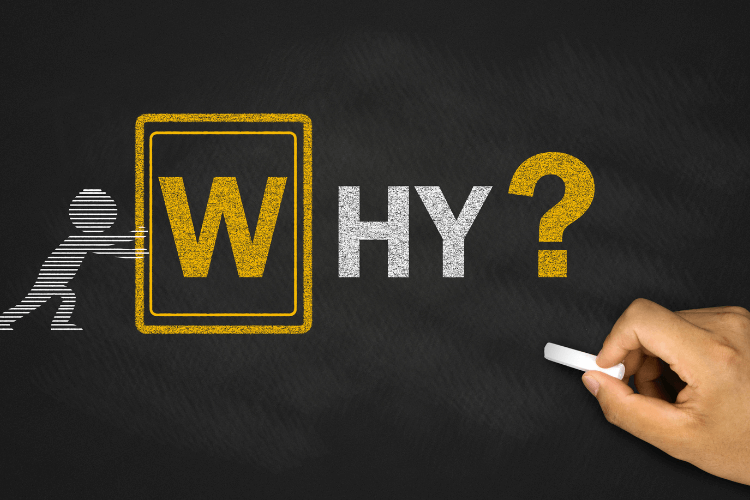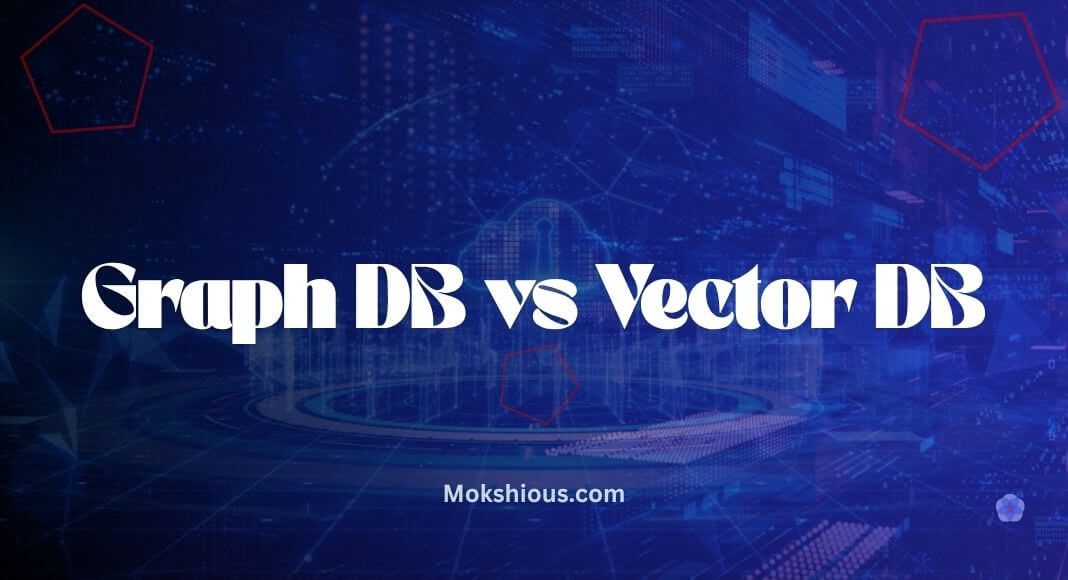If you’re comparing graph databases and vector databases, you’re probably already running either Neo4j or a semantic vector database like Pinecone or Weaviate in a pilot. The board is asking you for one database to rule them all, your RAG agents are starting to hallucinate, and your enterprise knowledge base design is at a crossroads.
In this guide, we’ll break down graph DB vs vector DB vs hybrid architectures, covering query patterns, latency, compliance, data governance for AI, and the CTO decision matrix, so you can pick the right knowledge backbone for your LLM strategy.
Why One Database vs Another Fails for Complex Knowledge in AI

Graph Database Latency vs Vector Database Recall
When it comes to complex data in enterprise AI system architecture, no single type of database can handle it all:
- Graph database: (like Neo4j) nails multi‑hop reasoning, graph traversal, relationship queries, nodes and edges, and data lineage. Perfect for network analysis, compliance, or audit logs.
- Vector database: (like Pinecone or Weaviate) dominates high‑dimensional vector similarity search, semantic embeddings, and RAG data stores for LLM retrieval backbones.
Choosing Between Vector and Graph Databases for RAG
- Force only graph, and you can’t do fuzzy semantic Q&A.
- Force only vector, and you can’t join relational or multi‑hop queries.
- Either way, latency spikes and hallucinations increase.
This is why graph and vector databases often need fusion or a hybrid search engine to reach production‑ready reliability.
Graph Database vs Vector Database Quick Primer

Graph Database Use Case and Relationship Query Patterns
- Neo4j and TigerGraph for enterprise knowledge graph and complex data: ACID transactions, graph queries, multi‑hop path discovery, graph theory‑based lineage, and social network analysis.
- Why graph queries excel at lineage, audit logs, and compliance: Graph databases are designed to handle complex data structures, nodes on the graph, and graph queries that relational databases cannot.
- Use case: Tracking supply chain dependencies, fraud detection, or relationship queries for customer journey mapping.
Vector Database Use Case and Semantic AI Retrieval(Pinecone, Weaviate, Milvus)
- Strengths: Vector similarity search, ANN indexes, and high‑dimensional data storage.
- Vector databases excel at similarity search for unstructured data, machine learning model embeddings, and RAG pipelines.
- Use case: Semantic FAQ engines, product recommendations, and LLM knowledge retrieval for enterprise AI knowledge bases.
Hybrid Database vs Single Database Approach(Graph‑Vector Fusion)
- Strengths: Combining dense + sparse retrieval enables semantic vector database lookup with graph database multi‑hop reasoning.
- Makes graph databases capable of semantic understanding without losing lineage.
- Use case: Hybrid RAG architecture for enterprise AI system architecture, where auditability and semantic recall both matter.
Vector Database vs Graph Database Decision Matrix for Enterprise
A CTO decision matrix makes it easy to justify your enterprise knowledge base design in budget discussions:
| Requirement / Criteria | Graph Database (Neo4j, TigerGraph) | Vector Database (Pinecone, Weaviate, Milvus) | Hybrid Database (Graph + Vector Fusion) | Why It Matters for CTOs |
| Multi‑hop reasoning & relationship queries | Excellent for graph traversal, nodes and edges, relationship queries, and social network analysis | Cannot express multi‑hop relationships or complex data structures | Combines graph queries + vector similarity search | Critical for enterprise knowledge bases and graph structure in RAG pipelines |
| Semantic search & vector similarity | Weak at high‑dimensional vector search; needs external embeddings | Excels at vector similarity, ANN queries, and semantic embeddings | Fuse the semantic vector database with a graph database | Drives LLM retrieval backbone, unstructured data search, and RAG data stores |
| Compliance & audit logs | Graph databases excel at auditability, data lineage, and governance | Vector databases are often metadata‑light, harder for compliance | Hybrid logs graph lineage and embedding metadata | Required for data governance for AI, audit trails, and spec‑driven controls |
| Latency for LLM retrieval | Graph queries ~20‑50 ms per graph traversal with complex data | Vector database stores ~2‑5 ms per query vector at scale | 8‑12 ms after fusion and rank re‑ranking (R | Impacts hallucination rate, RAG responsiveness, and user experience |
| Scalability with unstructured data | Handles structured or semi‑structured graph data best | Handles high‑dimensional vectors and unstructured data | Scales if cold edges and batch queries are opt | Ensures cost‑efficient growth for AI knowledge orchestration |
| Cost efficiency & TCO | Cost rises with dense edge expansion and complex data | Optimized for vector search; supports quantization | A hybrid may duplicate data and require extra orchestration | Directly affects CFO approval, infrastructure planning, and CTO decision matrix outcomes |
| Developer ecosystem & skill availability | Mature with Neo4j, Cypher, GSQL, modern graph databases | Growing with Pinecone, Weaviate, and Qdrant APIs | Fusion requires a graph query language + vector API | Impacts time‑to‑market and engineering team readiness |
| Best primary use case | Complex relationships, lineage, and compliance | Semantic similarity, unstructured retrieval, LLM search | Multi‑hop + semantic fusion for enterprise | Helps choose the right database for enterprise AI system architecture |
Interpretation:
- Go graph database if 80%+ queries need relationship reasoning.
- Go vector database if 80%+ queries need semantic vector search.
- Go hybrid search if your LLM retrieval backbone needs both multi‑hop and semantic embeddings for RAG.
Graph and Vector Databases Performance & Cost Comparison

Vector vs Graph Database Latency Benchmarks
- Vector database vs graph database:
- Vector: ~3 ms per query vector for 1B+ embeddings in Pinecone/Weaviate.
- Graph: ~20 ms for Cypher multi‑hop traversal.
- Hybrid: ~8‑12 ms after rank fusion (RRF) and knowledge orchestration.
Enterprise Data Storage Optimization and Use Case
- Store cold edges from graph databases in blob storage like S3.
- Use quantization and batch queries to cut vector database stores.
- Avoid duplicating unstructured data across databases vs a hybrid unnecessarily.
Knowledge Graph Governance & Spec‑Driven Controls

In enterprise AI system architecture, picking the right database isn’t just about latency or vector similarity; it’s also about governance, auditability, and compliance. A CTO decision matrix isn’t complete without a clear spec‑driven approach to data governance for AI.
When RAG pipelines, graph databases, and vector databases handle enterprise knowledge bases, governance ensures that every query, embedding, and data structure can be traced, audited, and versioned.
1. Embedding Versioning and Schema Alignment
One of the most overlooked aspects of graph and vector databases is schema drift. If your knowledge graph architecture changes, or you regenerate embeddings for your semantic vector database, your LLM retrieval backbone can silently start returning inconsistent results.
Key best practices:
- Version schema + embedding weights together: Every graph query or vector similarity search should map back to a versioned schema and embedding model hash.
- Maintain a spec‑driven registry: Document node and edge types, data models, embedding dimensions, and vector database stores in one knowledge orchestration file.
- Align with RAG data stores: When graph databases are designed for multi‑hop queries and vector databases work for semantic recall, your hybrid search engine needs synchronized data models to avoid hallucinations.
2. Auditability for Compliance
Enterprise CTOs face constant questions from CFOs, security officers, and auditors:
- “Where did this answer come from?”
- “Which nodes on the graph or vector embeddings were used?”
- “Can we prove data lineage for compliance?”
How to ensure graph and vector database audit readiness:
- Graph databases excel here because graph queries inherently record paths and relationships.
- Vector databases are often metadata‑light, so add overlay logs to store:
- Embedding IDs
- Source document hashes
- Timestamped query vectors
- Hybrid architectures can combine graph lineage + vector metadata for a full audit trail.
Pro tip: For agentic AI or LLM retrieval pipelines, tag every query vector with a trace ID that links graph traversal, vector search results, and LLM outputs. This enables hallucination containment and post‑hoc validation.
3. Security & Access Control
With graph and vector databases now forming the knowledge backbone for LLM agents, security and data governance for AI cannot be an afterthought.
Practical steps:
- Role‑based access (RBAC): Limit who can query the graph structure vs vector database stores.
- Field‑level masking: If unstructured data embeddings contain sensitive info, use encryption or tokenization.
- Spec‑driven ACLs: Define access policies in infrastructure‑as‑code or policy‑as‑code format to satisfy audit logs.
Example hybrid workflow:
- User query hits fusion layer
- Graph traversal runs with Cypher/Gremlin under RBAC
- Vector similarity search runs with embedding filtering
- Results logged with trace ID for compliance
4. Spec‑Driven Orchestration in Hybrid Architectures
The next frontier of governance is spec‑driven orchestration, where every component of your knowledge backbone is codified.
- Define data sources, graph edges, vector embeddings, and RAG retrieval logic in a single specification file.
- Automate deployment + validation so that LLMO pipelines can verify data integrity, query correctness, and audit readiness before each run.
- Implement graph‑vector fusion rules in spec‑driven configs, e.g.:
- First hop on graph → top 100 nodes → vector search → top 20 semantic matches → RRF → LLM
This approach not only reduces hallucination rates, but it also makes compliance reporting almost effortless.
Hybrid Database Migration & Use Case Playbook
- Assess query patterns: Calculate % of multi‑hop vs semantic queries.
- Run a PoC checklist: Test latency, hallucination rate, and data model coverage. Although vector and graph databases are gaining popularity, ops skill readiness is crucial for effective implementation.
- Operationalize:
- Align architecture with vector databases and graph integration. Enterprise TCO and LLMO goals related to high-dimensional data.
- Train engineers in graph query language, Vector search APIs are increasingly important for applications that require real-time data processing and streaming data use cases, and hybrid orchestration.
Implementation and Integration Challenges

Rolling out a graph database, vector database, or hybrid search engine sounds exciting in the architecture diagram, but reality is often messier. Enterprise AI system architecture teams hit roadblocks across data model alignment, latency optimization, and ops skill gaps.
Here are the key integration challenges you’ll face:
1. Complex Data Orchestration
When you connect graph and vector databases, you’re effectively maintaining two different data structures:
- Graph structure for nodes and edges that handle relationship queries and graph traversal
- A vector database stores unstructured data, semantic embeddings, and high‑dimensional vector search
Challenge:
Synchronizing updates and data lineage between the two. Without knowledge orchestration, a single change in your graph data model can break your vector search or cause hallucination spikes in the LLM retrieval pattern.
2. Tooling and Ecosystem Limitations
- Graph databases like Neo4j Graph or TigerGraph have mature ecosystems with Cypher, GSQL, and graph query languages, but vector similarity is still an add‑on.
- Vector databases like Pinecone integration, Weaviate, and Milvus are optimized for RAG and vector search, but have limited multi‑hop query or graph theory capabilities.
- Hybrid search engines require graph‑vector fusion layers or stateless rank‑fusion (RRF) systems that are still emerging in open‑source and enterprise tools.
Impact:
CTOs face longer implementation timelines, need specialized ops talent, and sometimes rely on custom middleware.
3. Streaming Data and Real‑Time RAG
If your LLM retrieval backbone involves a streaming data use case, like real‑time recommendations or threat intelligence for cybersecurity, you need:
- Low‑latency vector updates
- Graph edge insertions without locking
- High‑frequency data governance for AI
Without careful planning, latency spikes and inference costs will escalate.
4. Skill Gaps and Organizational Readiness
Hybrid architectures require engineers to speak two languages:
- Graph query language for graph databases, Excel use cases
- Vector search APIs for vector databases work, and embedding pipelines
CTOs often underestimate training and ops overhead, which can delay ROI and impact enterprise TCO.
Future Trends in Vector vs Graph Database Evolution

The graph vs vector database debate is evolving fast. The market is shifting toward hybrid knowledge backbones, agentic AI, and LLMO‑friendly RAG architectures that are spec‑driven and compliance‑ready.
Here’s what’s next:
1. Native Hybrid Database Engines
- Graph databases are designed to adopt vector capabilities (e.g., TigerVector, Neo4j vector indexing).
- Vector databases are often integrating graph overlays for multi‑hop reasoning (e.g., Weaviate Knowledge Graph Module).
- Expect databases vs hybrid to blur, modern graph databases will offer semantic vector similarity as a default.
2. Embedded Vector and Graph in Traditional Databases
- Traditional relational databases like MariaDB and PostgreSQL are adding vector database stores to reduce stack complexity.
- This allows graph and vector databases to merge into a single operational layer, cutting duplication costs in hybrid search engines.
3. AI‑Driven Knowledge Orchestration
- Knowledge orchestration will become spec‑driven, where:
-
- Data models, graph queries, and vector embeddings are codified in a unified spec
- RAG pipelines can auto‑validate retrieval integrity and compliance readiness before every run
This aligns with LLMO and agentic AI best practices to reduce hallucinations and improve hybrid search performance.
4. Market Growth and Enterprise Adoption
- The vector database market is projected to grow at ~26% CAGR through 2025, driven by agentic AI, RAG adoption, and enterprise knowledge base design.
- Hybrid search engines will become the default infrastructure for:
- Enterprise AI system architecture
- Cybersecurity and SaaS knowledge retrieval
- Complex compliance and audit workloads
5. Governance‑First Architectures
- Data governance for AI is moving front and center.
- Expect policy‑as‑code for graph and vector databases to become standard, enabling full lineage, audit, and compliance out of the box.
- Spec‑driven orchestration ensures graph‑vector fusion is not just fast but also trustworthy for CIO and CFO approval cycles.
Conclusion: Choosing the Right Vector and Graph Database Path
Choosing between a graph database, a vector database, or a hybrid knowledge backbone ultimately comes down to your query patterns, compliance needs, and growth strategy. If your enterprise AI system architecture relies heavily on multi‑hop reasoning, relationship queries, and data lineage, a graph database remains the strongest foundation. If semantic similarity search, high‑dimensional vector embeddings, and Graph RAG pipelines are your priority, a vector database delivers speed and simplicity.
And if your organization demands both multi‑hop reasoning and semantic recall, with auditability, knowledge orchestration, and governance at the core, then a hybrid graph‑vector fusion is the clear path forward. By aligning database choice with business objectives, cost efficiency, and compliance readiness, CTOs can build a future‑proof LLM retrieval backbone that minimizes hallucinations, supports agentic AI, and becomes the trusted knowledge base for the next era of enterprise AI.
